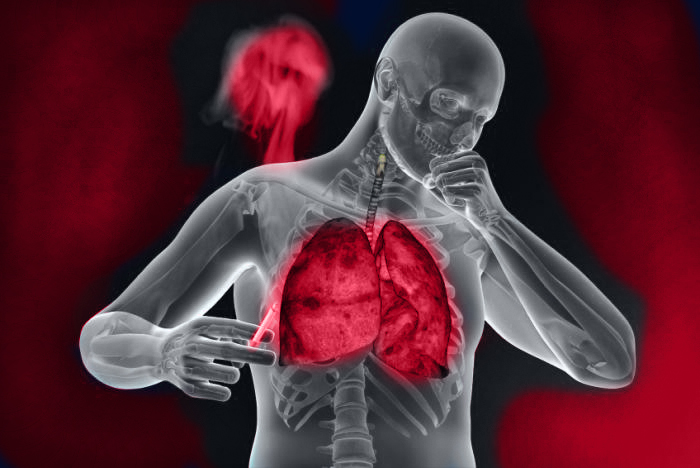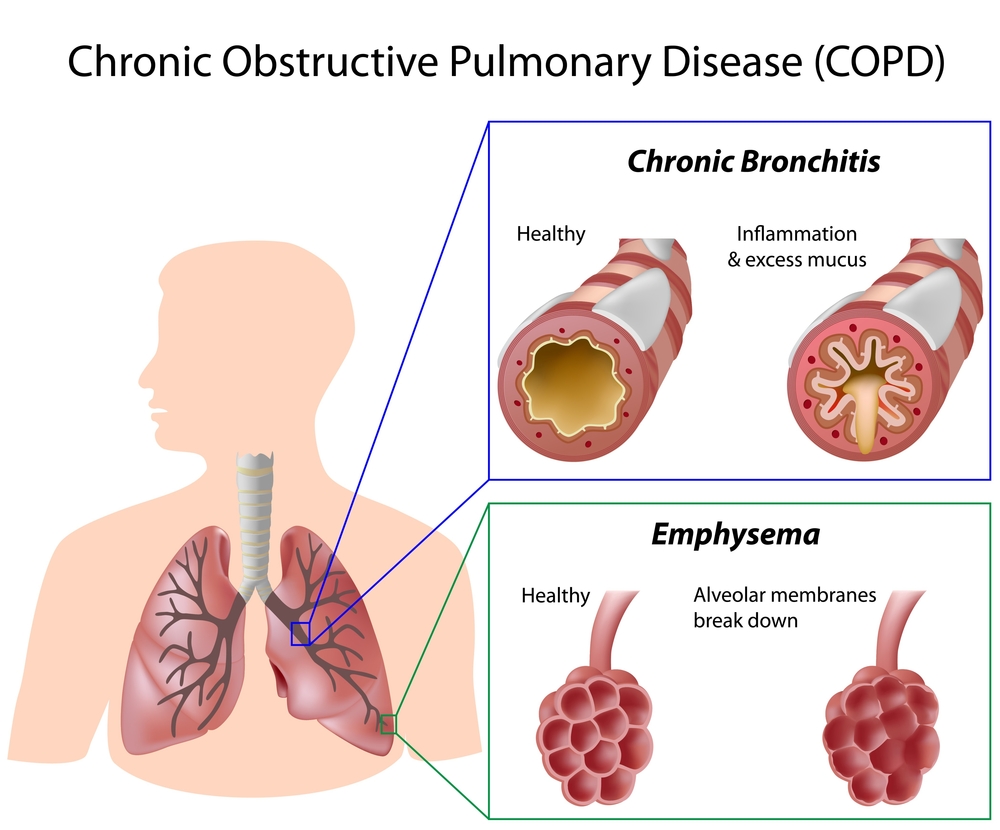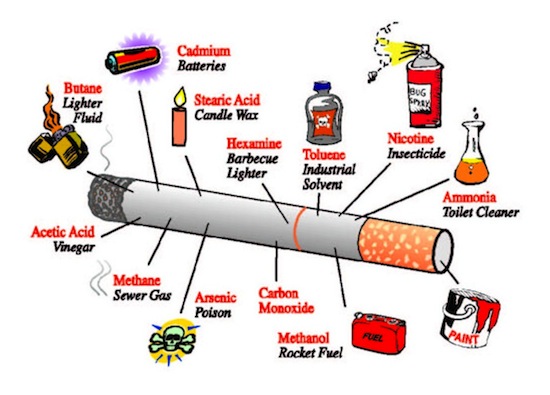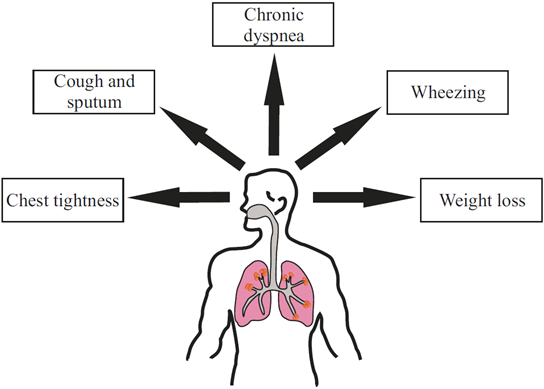Warning: Invalid argument supplied for foreach() in /home1/redcare1/public_html/wp-content/themes/uplift/swift-framework/content/sf-post-formats.php on line 89

Chronic Obstructive Pulmonary disease (COPD) is a lung disease characterized by longstanding obstruction of lung airways that interferes with normal breathing and is not fully reversible. There are 2 forms of COPD; Chronic Bronchitis and Emphysema. Sufferers of COPD tend to have a bit of both. Chronic bronchitis is defined as presence of a chronic cough that is accompanied by sputum production for at least 3 months in 2 consecutive years. Emphysema is abnormal enlargement of air spaces within the lungs.

It is a common misconception that COPD is rare. Even though it is relatively little known, it is one of the top 4 causes of death in developed countries and prevalence in Nigeria has been shown to be on the rise. Also, the symptoms are not always apparent and COPD can be silent for years until it is too late.
Causes
- Smoking: Most cases of COPD are caused by smoking cigarettes, cigars, pipes etc. This also includes long tem second hand smoking
- Environmental and workplace pollutants like fumes, chemicals and dust are also contributing factors
- Genetics: heredity also plays a significant role in COPD development.

Symptoms
Patients with Chronic Obstructive Pulmonary disease typically have symptoms of both chronic bronchitis and emphysema. These include:
- Cough: usually worse in the morning and is accompanied by sputum production
- Breathlessness: which is seen more in the patients 60 and above.
- Wheezing which is usually worse after physical activity
- Other symptoms that might be seen include tightness in the chest, swelling of the legs and also weight loss in the patient
The diagnosis of COPD is done using spirometry which is a test that assesses the amount of air that can be breathed out of the lungs forcefully.

Prevention
The best form of treating COPD is preventing it. Follow these steps to reduce risk of COPD:
- Stop smoking if you currently do, and do not start if you are a non-smoker
- Avoid exposure to second hand smoking
- Be aware of other dangers: stay clear of harmful chemical fumes, cooking wood and similar toxic agents
- Be aware of your family history and take necessary precautions if you have a familial risk factor
COPD cannot be cured, it can only be managed as lung damage cannot be reversed. Early screening can identify COPD before major loss of lung tissue happens; present early to a doctor if you experience any of the aforementioned symptoms.
The doctor’s goal in the management of a patient with Chronic Obstructive Pulmonary Disease is to improve the patient’s quality of life, preserve the patient’s lung function, improve the symptoms and prevent the worsening of disease. This is done through smoking cessation and oxygen therapy, the use of inhalers which reduce the airway obstruction, steroids and chest physiotherapy.
- Umar Adegoke



